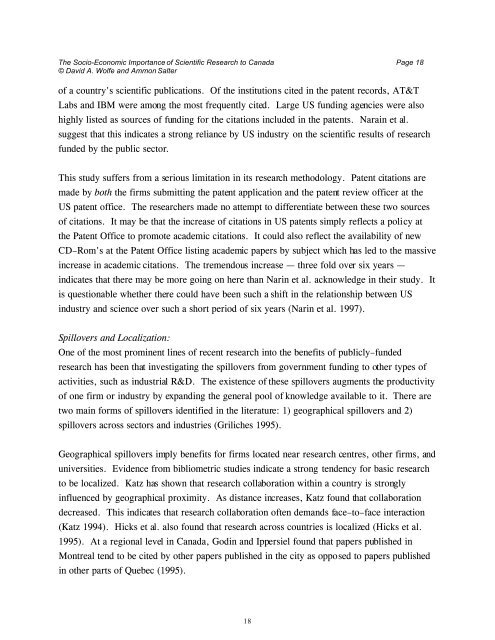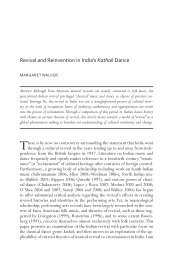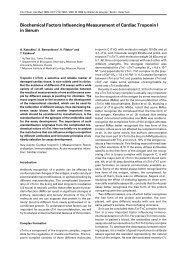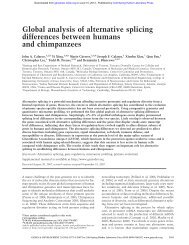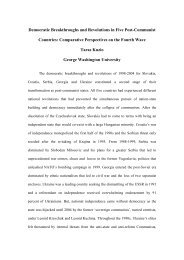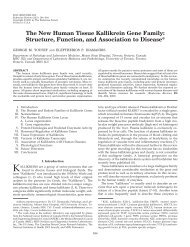The Socio-Economic Importance of Scientific Research To Canada
The Socio-Economic Importance of Scientific Research To Canada
The Socio-Economic Importance of Scientific Research To Canada
You also want an ePaper? Increase the reach of your titles
YUMPU automatically turns print PDFs into web optimized ePapers that Google loves.
<strong>The</strong> <strong>Socio</strong>-<strong>Economic</strong> <strong>Importance</strong> <strong>of</strong> <strong>Scientific</strong> <strong>Research</strong> to <strong>Canada</strong> Page 18© David A. Wolfe and Ammon Salter<strong>of</strong> a country's scientific publications. Of the institutions cited in the patent records, AT&TLabs and IBM were among the most frequently cited. Large US funding agencies were alsohighly listed as sources <strong>of</strong> funding for the citations included in the patents. Narain et al.suggest that this indicates a strong reliance by US industry on the scientific results <strong>of</strong> researchfunded by the public sector.This study suffers from a serious limitation in its research methodology. Patent citations aremade by both the firms submitting the patent application and the patent review <strong>of</strong>ficer at theUS patent <strong>of</strong>fice. <strong>The</strong> researchers made no attempt to differentiate between these two sources<strong>of</strong> citations. It may be that the increase <strong>of</strong> citations in US patents simply reflects a policy atthe Patent Office to promote academic citations. It could also reflect the availability <strong>of</strong> newCD–Rom's at the Patent Office listing academic papers by subject which has led to the massiveincrease in academic citations. <strong>The</strong> tremendous increase — three fold over six years —indicates that there may be more going on here than Narin et al. acknowledge in their study. Itis questionable whether there could have been such a shift in the relationship between USindustry and science over such a short period <strong>of</strong> six years (Narin et al. 1997).Spillovers and Localization:One <strong>of</strong> the most prominent lines <strong>of</strong> recent research into the benefits <strong>of</strong> publicly–fundedresearch has been that investigating the spillovers from government funding to other types <strong>of</strong>activities, such as industrial R&D. <strong>The</strong> existence <strong>of</strong> these spillovers augments the productivity<strong>of</strong> one firm or industry by expanding the general pool <strong>of</strong> knowledge available to it. <strong>The</strong>re aretwo main forms <strong>of</strong> spillovers identified in the literature: 1) geographical spillovers and 2)spillovers across sectors and industries (Griliches 1995).Geographical spillovers imply benefits for firms located near research centres, other firms, anduniversities. Evidence from bibliometric studies indicate a strong tendency for basic researchto be localized. Katz has shown that research collaboration within a country is stronglyinfluenced by geographical proximity. As distance increases, Katz found that collaborationdecreased. This indicates that research collaboration <strong>of</strong>ten demands face–to–face interaction(Katz 1994). Hicks et al. also found that research across countries is localized (Hicks et al.1995). At a regional level in <strong>Canada</strong>, Godin and Ippersiel found that papers published inMontreal tend to be cited by other papers published in the city as opposed to papers publishedin other parts <strong>of</strong> Quebec (1995).18


